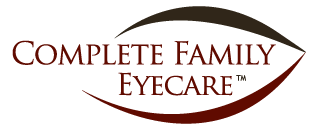What is Myopia?
Myopia is a common “refractive error.” Since no eye is perfect, everyone has a refractive error which could be nearsighted, farsightedness, astigmatism, or presbyopia or a combination of all of them. Myopia implies that the patient is sighted more for near objects and can’t see distance objects clearly. The terminology can sometimes be confusing.
Signs and Symptoms of Myopia
Blurred distance vision especially in lowlight conditions is the most common symptom. Other symptoms may include light sensitivity, squinting, and eyestrain while performing distance vision tasks.
What Causes Myopia?
Myopia usually results from the eye growing too long. The longer the eye, the higher the myopia and the thicker the glasses. The length of the eye is determined by genetics. No study has proven that our personal habits and activities can cause the length of the eye to increase. All those things your mother told you about playing video games, reading the dark, not eating your carrots, sitting too close to the TV, etc. have no scientific basis. Sorry moms.
How is Myopia Diagnosed?
Myopia can only be diagnosed during a comprehensive eye examination. Your doctor will perform a refraction which involves testing multiple lens combinations to determine the prescription that is best for you.
How is Myopia Treated?
There are several treatments for myopia. First of course being eyeglasses with lenses designed to move the focus of the eye back to the proper place on the retina. Contrary to popular belief, no study has ever proven that wearing eyeglasses will cause the eye to further elongate and the myopia to increase, but rather the glasses just compensate for the refractive error.
For those patients with myopia that do not like glasses, contact lenses are often a great solution. There are a wide variety of contact lenses available to help with myopia as well as other refractive errors. The vast majority of contact lens wearers use disposable soft lenses but there are still patients that benefit from rigid gas permeable (hard) lenses.
Refractive surgery such as LASIK, PRK, and radial keratotomy are also very popular options to correct myopia. The procedures have been used for almost 4 decades with high rates of success and minimal complications. All types of refractive surgery for myopia involve flattening the curvature of the cornea which effectively moves the eye’s focus back to the proper place on the retina. Unfortunately, these procedures are not perfect but can greatly reduce the need for glasses or contact lenses.
Another option for myopia correction is cataract surgery or more specifically “clear lens exchange” in which the eyes lens(behind the pupil) is removed and an artificial lens is implanted with the proper amount of myopia correction built into it. These lenses can also be designed to help with other refractive errors. This procedure is more invasive and costly ($10,000) and is not covered by insurance so it is more optimal for patients with very high amounts of myopia who cannot wear contact lenses and LASIK surgery is not an option. Similar to other refractive surgeries, clear lens exchange is not perfect and a small residual refractive error will remain.
What Steps Should I Take If I Think I Have Myopia?
We recommend making an appointment to see Dr. Reinders as quickly as possible to make sure that a simple case of myopia is all that is causing your vision problem. He has 22 of years of experience treating patients with myopia and other related conditions. The sooner he can check your eyes, the better. All doctors agree that waiting and hoping it will get better is not a prescription for success.
